In a world where innovation and culinary creativity are at the forefront, the commercial waffle maker sector has seen remarkable growth. As we delve into the intricate details of this industry, we discover a tapestry of trends, technological advancements, and market dynamics that shape the landscape. From the bustling streets of European cities to the diverse dining scenes of North America, the commercial waffle maker has become a staple in the foodservice industry. This article explores the factors propelling the sector’s growth, the unique features of high-end commercial waffle makers, the challenges and opportunities it faces, and a closer look at successful brands. We’ll also analyze the critical role distribution channels play in this dynamic market, culminating in a reflection on the future of commercial waffle makers.
Introduction to the Commercial Waffle Maker Market
The commercial waffle maker market has emerged as a bustling sector within the culinary equipment industry, offering a variety of high-quality appliances designed for professional use. These machines are not just confined to bakeries and cafes but have found their way into hotels, restaurants, and even catering services. With a focus on efficiency, durability, and versatility, commercial waffle makers have become an essential tool for those looking to serve up the perfect waffle in a professional setting.
In recent years, the demand for commercial waffle makers has surged, driven by the growing popularity of waffles as a breakfast staple and a trendy dessert. The market is witnessing a shift towards healthier eating habits, with consumers seeking out gluten-free and whole-grain options, which has also influenced the design and features of commercial waffle makers.
The European and North American markets have been at the forefront of this trend, with a strong emphasis on innovation and quality. In Europe, the market is characterized by a diverse range of products, catering to both traditional and modern tastes. North America, on the other hand, is seeing a surge in demand for artisanal and gourmet waffles, which has led to the development of more sophisticated waffle makers.
One of the key factors contributing to the growth of the commercial waffle maker market is the increasing demand from the hospitality and foodservice industries. As restaurants and cafes strive to offer unique and memorable experiences to their customers, the inclusion of waffles on the menu has become a strategic move. This demand has spurred manufacturers to produce commercial waffle makers that can handle high volumes and maintain consistent quality.
Moreover, the culinary landscape in Western countries is evolving, with a greater emphasis on breakfast options beyond the traditional toast and eggs. Waffles, with their variety of flavors and toppings, have become a favorite among diners. This shift has necessitated commercial waffle makers that can produce a wide array of waffle designs, from classic Belgian to fluffy American.
When it comes to the features of high-end commercial waffle makers, several key elements stand out. Non-stick surfaces are a must, as they ensure easy cleaning and prolonged durability. Programmable settings and timers are also crucial, allowing operators to achieve consistent results with minimal effort. Additionally, the capacity of these machines is often a significant factor, as operators need to be able to serve multiple customers simultaneously.
Despite the growth and innovation in the market, challenges remain. Competition is fierce, with numerous manufacturers vying for market share. Market saturation can lead to price wars and a decrease in product quality. However, there are opportunities for manufacturers to differentiate themselves through unique features, superior build quality, and exceptional customer service.
Data-driven insights have become increasingly important in the commercial waffle maker market. By analyzing historical sales data, manufacturers can predict market trends and anticipate future demand. This information is invaluable for strategic planning and product development. Predictions indicate that the market will continue to grow, with a particular focus on energy-efficient models and those that cater to specific dietary needs.
Several successful brands have made their mark in the commercial waffle maker market. These brands have managed to stand out by offering exceptional products and innovative solutions. Case studies of these brands reveal the strategies they have employed to achieve market penetration and customer loyalty.
The role of distribution channels in the commercial waffle maker market cannot be overstated. Online sales have become a significant part of the market, with manufacturers and retailers leveraging e-commerce platforms to reach a wider audience. However, the importance of offline sales and retail partnerships remains strong, as many operators prefer to see and touch the products before making a purchase. Direct-to-consumer models are also gaining traction, allowing manufacturers to build a direct relationship with their customers.
In conclusion, the commercial waffle maker market is a dynamic and rapidly growing sector within the culinary equipment industry. With a focus on innovation, quality, and customer satisfaction, manufacturers are continuously pushing the boundaries of what commercial waffle makers can offer. As the demand for waffles continues to rise, the market is poised for further expansion, with new opportunities and challenges on the horizon.
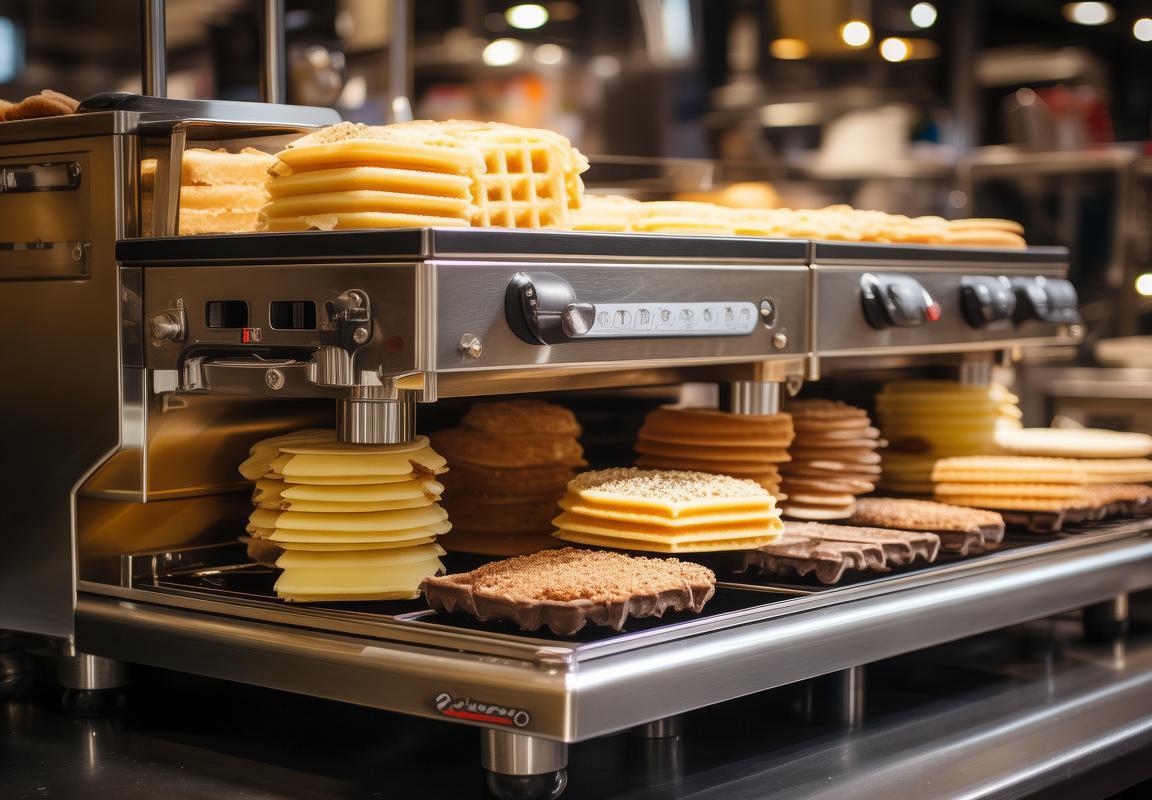
The European and North American Landscape
In Europe, the commercial waffle maker market is marked by a diverse range of products catering to various culinary preferences. Countries like Germany, France, and the Netherlands are particularly known for their love of waffles, with a strong emphasis on traditional and artisanal styles. These regions often see a blend of classic Belgian Liege waffles with innovative, modern twists, which is reflected in the commercial waffle makers available.
Germany, in particular, boasts a robust hospitality sector that includes a multitude of cafes and bakeries, each with a penchant for waffles. The commercial waffle makers here are designed to handle high volumes, with durable construction and features that prioritize efficiency and ease of use. The market is also witnessing a surge in demand for electric models that offer consistent temperature control and multiple waffle shapes.
In France, the focus is on the sweet, custard-filled waffles, known as Gaufres Parisiens. Commercial waffle makers in this market are often equipped with intricate patterns and non-stick surfaces to ensure the perfect texture and ease of release. French consumers value the artistry in their waffles, and as such, the commercial waffle makers here are often seen as an extension of the culinary craft.
The North American market, particularly in the United States and Canada, has a different dynamic. Here, the commercial waffle maker market is driven by a variety of factors, including the popularity of waffles in breakfast buffets, diners, and even upscale restaurants. The market is segmented into different categories, including Belgian-style waffles, American-style waffles, and even gluten-free options.
American commercial waffle makers are typically designed for high-speed production, with features that allow for quick and easy cleaning. The market is also influenced by the rise of health-conscious consumers, who are seeking out healthier versions of their favorite treats. This has led to an increase in the number of waffle makers that offer customization, such as adjustable browning settings and removable plates for easy cleaning.
Canada’s commercial waffle market is somewhat similar to the U.S., with a preference for the classic American waffle. However, there is also a growing interest in international flavors, such as the Dutch stroopwafel-inspired waffles. Canadian commercial waffle makers often come with a range of features to accommodate these diverse preferences, including various shapes and sizes.
In both regions, there is a notable trend towards innovation and technology. Smart waffle makers with digital displays and programmable settings are becoming increasingly popular, allowing operators to achieve consistent results with minimal effort. Additionally, there is a growing emphasis on sustainability, with manufacturers focusing on energy-efficient designs and eco-friendly materials.
The European and North American landscapes for commercial waffle makers are also shaped by the presence of major players in the industry. In Europe, brands like Groupe SEB and WMF are well-established, offering a wide range of commercial waffle makers that cater to both traditional and modern demands. In North America, names like Hamilton Beach and Cuisinart are synonymous with quality and reliability in the commercial kitchen appliance market.
The competitive nature of these markets has led to continuous innovation and improvement in product design. Operators are looking for waffle makers that not only produce high-quality waffles but also integrate seamlessly into their existing workflows. This has driven the development of commercial waffle makers that are not only efficient but also versatile, capable of handling a variety of recipes and serving sizes.
In conclusion, the European and North American landscapes for commercial waffle makers are dynamic and evolving. They are influenced by cultural preferences, technological advancements, and consumer demands. As these markets continue to grow, so too will the variety and sophistication of the commercial waffle makers available, ensuring that operators have the tools they need to meet the expectations of their customers.
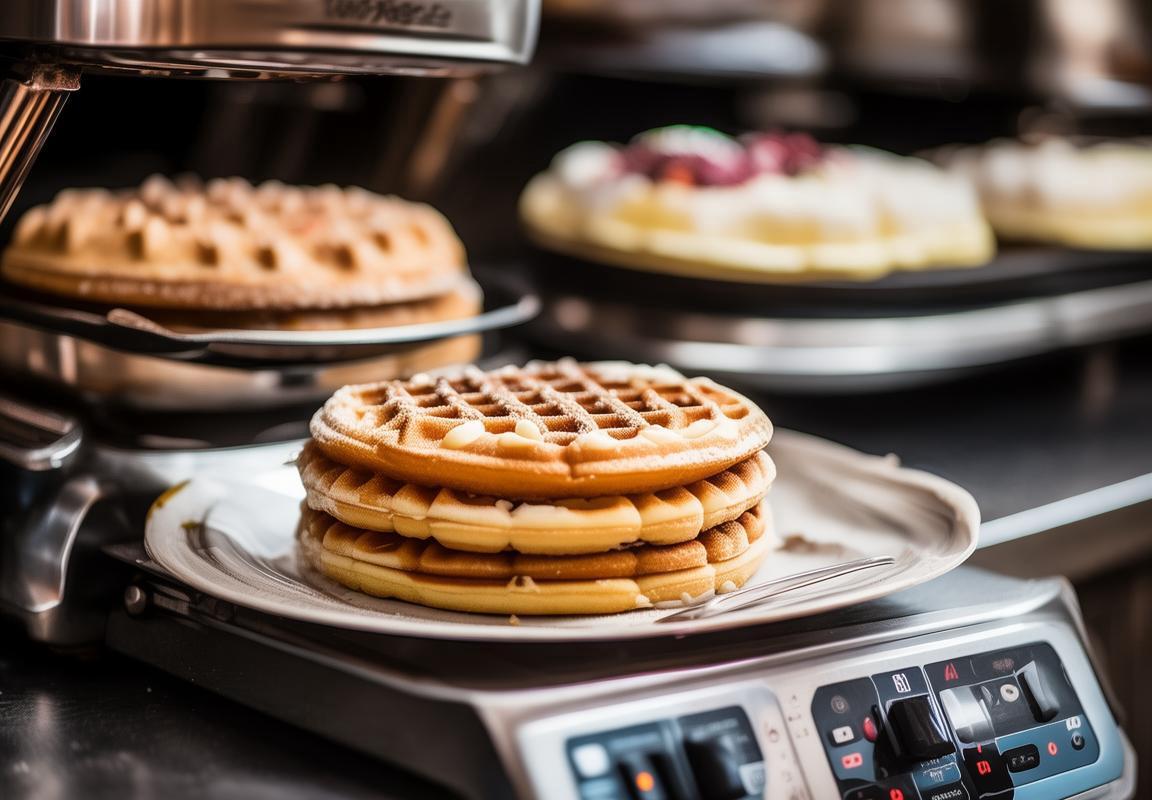
Factors Driving Growth in the Commercial Waffle Maker Sector
The commercial waffle maker sector has seen significant growth, propelled by a variety of factors that have both influenced consumer demand and shaped the competitive landscape. Here’s an exploration of some key drivers of this growth:
In recent years, there has been a notable shift towards health-conscious eating habits among consumers in Europe and North America. This has led to a surge in demand for healthier breakfast options, and waffles, when made with whole grains and fresh ingredients, fit neatly into this trend. The versatility of waffles as a base for various toppings and fillings has also contributed to their popularity.
The hospitality and foodservice industries have been a major driver of commercial waffle maker sales. With the rise of breakfast cafes, diners, and hotels, there’s an increasing need for efficient and reliable waffle-making equipment. The ability to offer custom waffles with unique patterns and shapes has become a point of differentiation for many establishments, leading to a higher demand for commercial-grade waffle makers.
Cultural shifts and globalization have played a role in the growth of the commercial waffle maker sector. The influence of American and European cuisine has spread worldwide, and waffles have become a staple in many countries. This has created a demand for high-quality commercial waffle makers that can produce consistent results across different markets.
Technological advancements have revolutionized the commercial waffle maker market. Modern machines now offer features like non-stick surfaces, programmable settings, and digital timers, which make them more user-friendly and efficient. These innovations have not only improved the cooking experience but have also extended the lifespan of the appliances, reducing maintenance costs for businesses.
The convenience factor cannot be overlooked when discussing the growth of the commercial waffle maker sector. Busy consumers are looking for quick and easy ways to enjoy their favorite foods, and waffles fit this bill perfectly. Commercial waffle makers allow for the production of waffles in large quantities, catering to the needs of fast-paced environments such as airports, stadiums, and office buildings.
The rise of social media and influencer culture has also had a significant impact on the commercial waffle maker market. With influencers showcasing their creative waffle recipes and unique toppings, the public’s interest in waffles has been piqued. This has led to an increase in consumer demand for both at-home and commercial waffle makers, as people seek to replicate these trendy waffle experiences.
The emphasis on sustainability and eco-friendly practices has influenced the commercial waffle maker sector as well. Manufacturers are responding to this trend by producing energy-efficient models and exploring alternative materials for their products. This focus on sustainability not only appeals to environmentally conscious consumers but also helps businesses reduce their operational costs in the long run.
The commercial waffle maker sector has also seen growth due to the diversification of the product range. From traditional Belgian waffles to mini waffles, pizzelles, and even gluten-free options, the variety available has expanded, catering to a wider audience with different dietary preferences and restrictions.
Lastly, the rise of breakfast as a destination meal has contributed to the growth of the commercial waffle maker sector. People are increasingly seeking out unique breakfast experiences, and waffles, with their ability to be customized and personalized, have become a favorite among breakfast enthusiasts. This has led to a surge in demand for high-quality commercial waffle makers that can meet the demands of these specialty breakfast venues.
These factors, among others, have collectively driven the growth of the commercial waffle maker sector, making it a dynamic and rapidly evolving market.
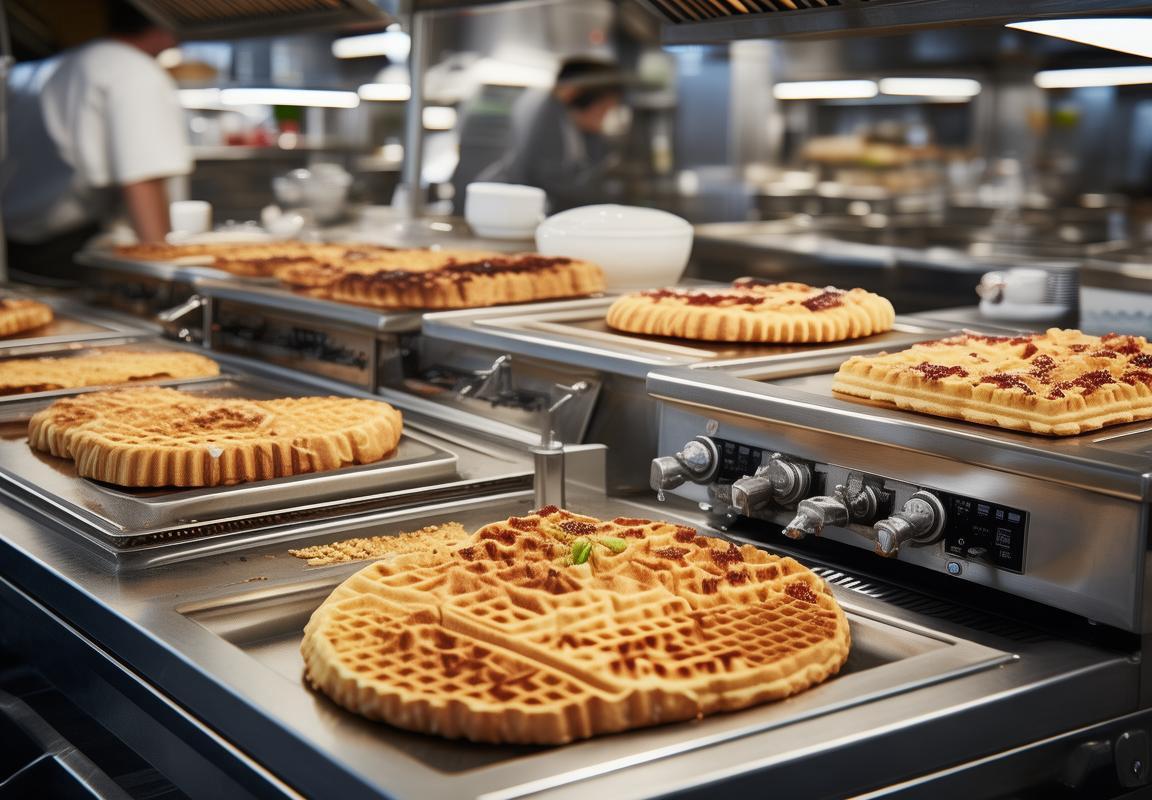
Key Features of High-End Commercial Waffle Makers
In the realm of commercial waffle makers, there’s a distinct trend towards high-end models that offer a blend of functionality, durability, and innovation. These top-tier waffle makers are not just tools for creating the perfect waffle; they are investments in quality and efficiency. Here’s a closer look at some of the key features that set these high-end commercial waffle makers apart:
-
Advanced Non-Stick Coatings: One of the standout features of high-end commercial waffle makers is their superior non-stick surfaces. These coatings are designed to last longer than traditional non-stick materials, ensuring that the waffles release effortlessly and the surfaces remain pristine with minimal cleaning required.
-
Programmable Settings: These waffle makers often come with a variety of programmable settings that allow for precise control over the cooking process. Users can adjust the browning level, time, and even the temperature, ensuring that each waffle is cooked to perfection every time.
-
Large Capacity: High-end commercial waffle makers are built to cater to busy environments like cafes, restaurants, and hotels. They typically feature a larger cooking surface, which means they can produce more waffles at once, reducing wait times and increasing productivity.
-
Multiple Waffle Patterns: Not all waffles are created equal, and high-end models often offer a variety of patterned plates to accommodate different preferences. From classic circles to heart shapes or even custom designs, these waffle makers can cater to a diverse clientele.
-
Timer Functions: To ensure consistency and efficiency, many high-end commercial waffle makers are equipped with timer functions. This feature allows operators to set the exact amount of time needed for each waffle, ensuring a uniform outcome without the need for constant supervision.
-
Easy-to-Read Displays: A user-friendly interface is crucial in a commercial setting. High-end waffle makers often come with clear, easy-to-read digital displays that provide at-a-glance information about the cooking status, settings, and any alerts or warnings.
-
Safety Features: Safety is a top priority in commercial kitchens, and high-end waffle makers are designed with this in mind. Features like automatic shut-off after a set period of inactivity, cool-touch handles, and overheat protection are standard, ensuring the safety of both staff and customers.
-
Sturdy Construction: High-quality materials are used to build these commercial waffle makers, ensuring they can withstand heavy use day in and day out. Durable stainless steel bodies, reinforced hinges, and robust electrical components are hallmarks of a high-end model.
-
Energy Efficiency: With rising energy costs, commercial kitchens are increasingly looking for ways to reduce their utility bills. High-end waffle makers are often designed to be energy-efficient, providing a cost-effective solution for businesses.
-
Maintenance and Cleaning: Keeping commercial kitchen equipment clean and in good working order is essential. High-end waffle makers are designed with easy maintenance in mind, with removable parts that are dishwasher-safe and surfaces that are easy to wipe down.
-
Customization Options: Some high-end models offer customization options for the waffle pattern and size, allowing businesses to create a unique offering that can be a draw for customers.
-
Brand Reputation and Support: The reputation of the brand behind the waffle maker can be a significant factor. High-end models often come with a brand that is known for reliability and excellent customer service, providing peace of mind for both the purchase and the long-term use of the appliance.
These features not only enhance the operational efficiency of a commercial kitchen but also contribute to the overall guest experience by providing high-quality, consistent waffles. As the demand for breakfast items continues to grow, these high-end commercial waffle makers are becoming a staple in the equipment arsenal of many foodservice establishments.
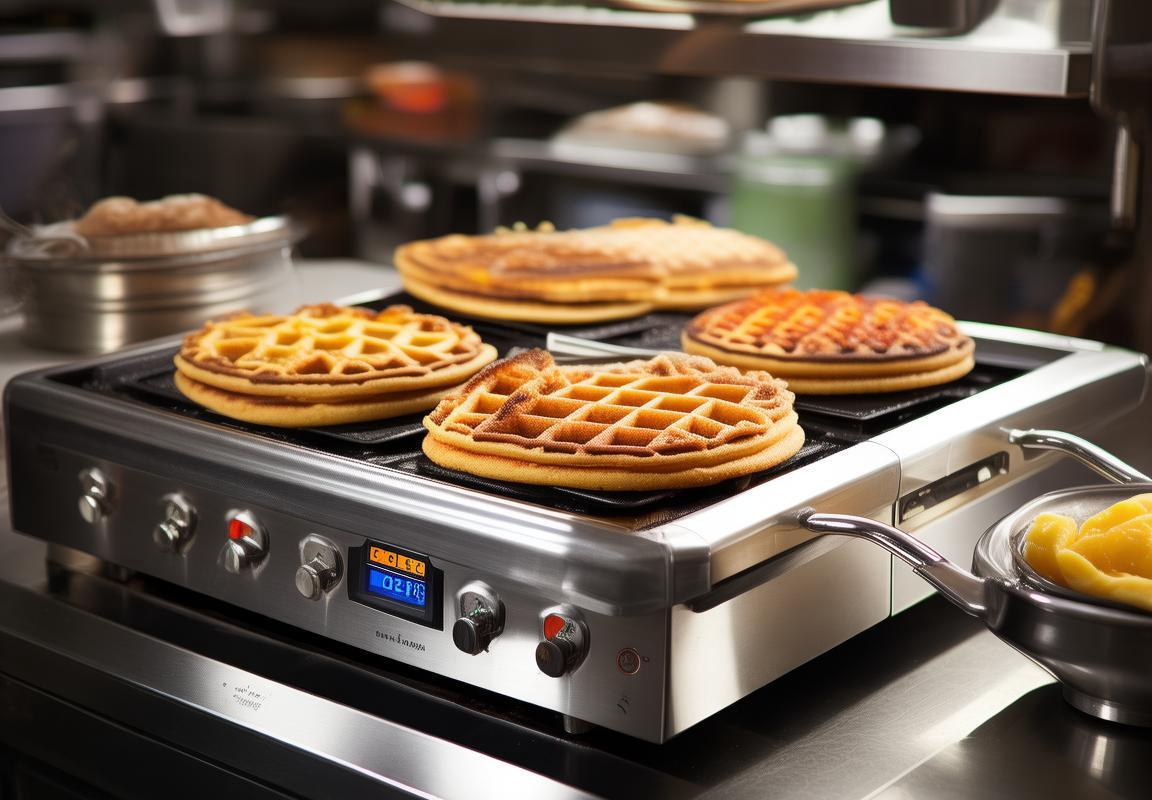
Challenges and Opportunities in the Market
In the bustling commercial waffle maker market, navigating the landscape isn’t just about understanding the demand but also recognizing the hurdles and opportunities that shape the industry. Here’s an exploration of the challenges and opportunities that waffle maker manufacturers and retailers face:
The competition in the market is fierce, with numerous brands vying for a slice of the waffle-loving public. From budget-friendly models to premium, feature-packed units, the variety can be overwhelming for consumers. This competition pushes companies to innovate and differentiate their products, but it also means that standing out can be a significant challenge.
Consumer preferences are ever-evolving, and what might be popular today could be obsolete tomorrow. Keeping up with these trends requires constant market research and the agility to adapt. For instance, the rise of health-conscious consumers has led to an increased demand for waffle makers that can produce low-fat, gluten-free, or even vegan waffles. Failing to anticipate these shifts can leave a brand behind.
The rise of e-commerce has transformed the way products are sold, but it also presents a unique set of challenges. Online competition is intense, and it’s easier for customers to compare prices and features. Additionally, the lack of physical touchpoints means that the brand’s reputation and product images must be top-notch to entice buyers. This shift has necessitated a stronger focus on digital marketing and customer service.
Sustainability is a growing concern for consumers and businesses alike. The commercial waffle maker market must address the environmental impact of its products, from materials used in manufacturing to the energy consumption during use. Brands that can demonstrate eco-friendly practices, such as using recycled materials or energy-efficient designs, are likely to gain a competitive edge.
Legal and regulatory compliance can be a complex issue, especially when it comes to safety standards and certifications. Ensuring that waffle makers meet all necessary requirements can be costly and time-consuming. However, compliance is non-negotiable, and any lapses can lead to recalls, fines, and damage to the brand’s reputation.
The opportunity for market expansion lies in targeting niche markets. For example, there’s a growing segment of consumers interested in artisanal and gourmet foods. High-end commercial waffle makers that offer unique features, such as customizable patterns or programmable settings, can cater to this demand. By focusing on these niche markets, companies can carve out a unique position in the industry.
Technological advancements continue to offer new opportunities. Smart appliances that can be controlled via smartphone apps or connected to the internet are becoming increasingly popular. By integrating these technologies into waffle makers, manufacturers can offer added convenience and value to consumers, potentially justifying a higher price point.
International expansion is another avenue for growth. While the North American and European markets are significant, there are untapped regions around the world where the waffle trend has yet to take off. By adapting products to local tastes and preferences, companies can tap into new consumer bases and increase their global footprint.
Lastly, partnerships and collaborations can create opportunities for innovation. For instance, working with restaurants or cafes to develop exclusive waffle recipes or themes can lead to co-branded products that appeal to both businesses and consumers. These collaborations can also provide valuable insights into consumer behavior and preferences.
In summary, the commercial waffle maker market is ripe with challenges and opportunities. Companies that can navigate the competitive landscape, anticipate market trends, embrace sustainability, and leverage technology and partnerships are well-positioned to thrive in this dynamic industry.

Data-Driven Insights and Predictions
The commercial waffle maker market has been experiencing a surge in demand, driven by a variety of factors that are reshaping the industry. One of the most significant drivers is the increased demand from the hospitality and foodservice sectors, as waffles have become a popular breakfast item and a staple in many cafes and restaurants. The rise of gourmet breakfasts and the quest for unique culinary experiences have further boosted the popularity of high-quality waffle makers.
The European and North American landscapes offer a glimpse into the global trend, where consumers are seeking convenience, quality, and innovation. In Europe, the demand for artisanal waffles is on the rise, with an emphasis on healthier, gluten-free options. North America, on the other hand, is witnessing a surge in the popularity of Belgian-style waffles, driven by a fusion of cultural tastes and a desire for variety.
The use of data analytics has become a crucial tool for businesses looking to gain a competitive edge in this dynamic market. By analyzing consumer preferences, market trends, and technological advancements, companies can tailor their products to meet the evolving demands of customers. This section will delve into some of the key insights and predictions derived from data-driven analysis.
Insight 1: The Growing Demand for Smart AppliancesData indicates that there is a growing trend towards smart appliances in both residential and commercial settings. Commercial waffle makers with built-in Wi-Fi capabilities and smartphone apps are becoming more sought after. These features allow operators to remotely control the machine, monitor usage, and even order supplies, which enhances efficiency and convenience.
Prediction 1: The Integration of IoT in Commercial Appliances Will SoarWith the increasing prevalence of the Internet of Things (IoT), it is predicted that the next wave of commercial waffle makers will come equipped with IoT capabilities, providing seamless integration with other kitchen equipment and systems.
Insight 2: The Health and Wellness TrendThe health and wellness movement has influenced consumer choices, with an emphasis on healthier, low-fat, and gluten-free options. Data from market research indicates that there is a growing demand for waffle makers that can produce these types of waffles, catering to dietary restrictions and preferences.
Prediction 2: A Shift Towards Health-Conscious Waffle MakersManufacturers are expected to focus on developing commercial waffle makers that can produce healthier waffles, possibly by using alternative cooking surfaces or innovative cooking techniques to reduce fat content and calorie count.
Insight 3: The Importance of SustainabilityConsumers and businesses alike are becoming more environmentally conscious. The use of sustainable materials and energy-efficient appliances is no longer just a trend; it’s a necessity. Data from surveys and reports highlight the importance of sustainability in the commercial kitchen equipment market.
Prediction 3: Eco-Friendly Features Will Become StandardAs sustainability continues to rise in importance, it is anticipated that eco-friendly features will become standard in commercial waffle makers, including energy-efficient heating elements, reusable parts, and biodegradable packaging.
Insight 4: Customization and PersonalizationCustomization and personalization are key factors in today’s consumer market. Data from focus groups and customer feedback suggests that operators are looking for waffle makers that can offer a variety of patterns, sizes, and even flavors to cater to individual preferences.
Prediction 4: Customizable Options Will Drive SalesThe commercial waffle maker market is expected to see an increase in sales of models that allow for customization, including programmable settings, multiple waffle shapes, and the ability to create personalized recipes.
Insight 5: Market Saturation and CompetitionAs the market for commercial waffle makers expands, so does the competition. Data reveals that while the market is growing, there is a risk of saturation, which could lead to price wars and a decline in quality.
Prediction 5: Strategic Partnerships Will EmergeTo avoid market saturation, manufacturers are predicted to form strategic partnerships, not only with other kitchen equipment suppliers but also with foodservice consultants and distributors, to create unique value propositions and differentiate their products.
Insight 6: Technological InnovationsThe rapid pace of technological innovation continues to influence the commercial waffle maker market. Data from patent filings and industry conferences show that new technologies are being developed to enhance user experience and operational efficiency.
Prediction 6: New Technologies Will Disrupt the MarketInnovations such as induction heating, anti-stick coatings, and self-cleaning features are expected to disrupt the market, offering operators new ways to streamline their operations and create exceptional waffles.
These insights and predictions paint a picture of a dynamic commercial waffle maker market that is responsive to consumer demands, technological advancements, and sustainability concerns. As the industry continues to evolve, those who can leverage data to anticipate and adapt to these changes will be best positioned to thrive.
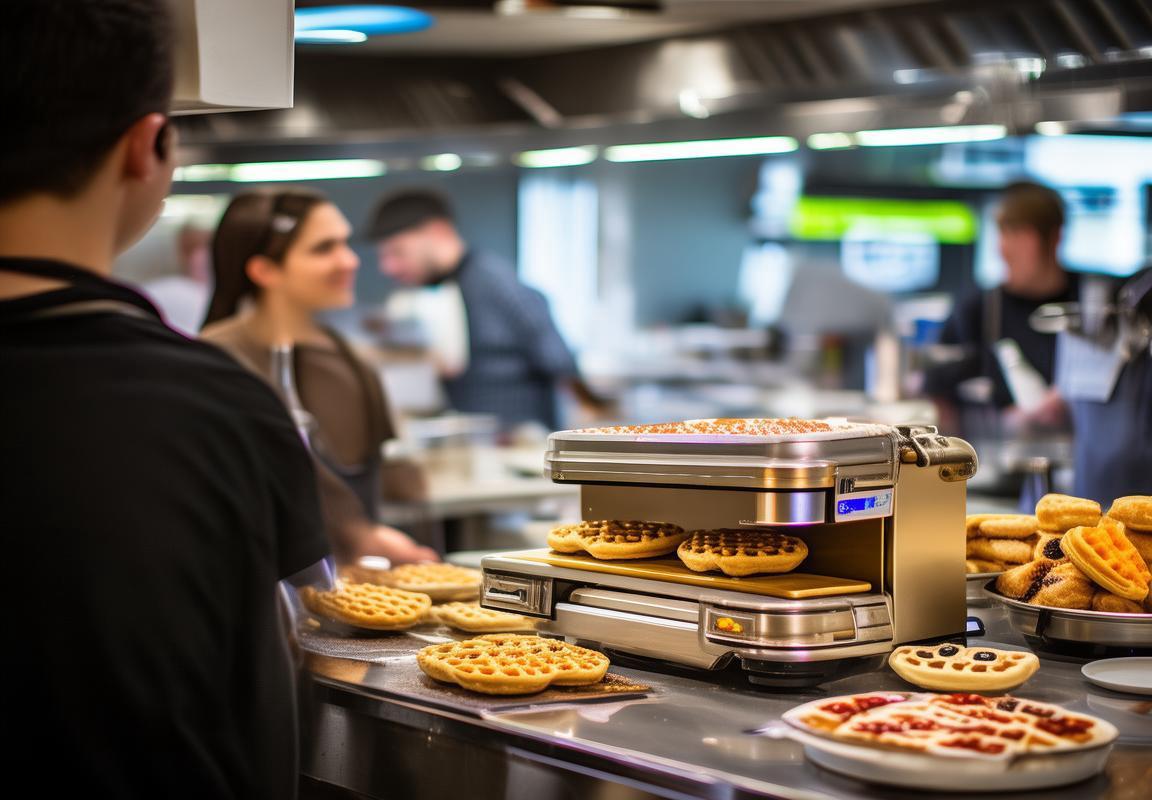
Case Studies: Successful Commercial Waffle Maker Brands
In the competitive world of commercial waffle makers, certain brands have risen to the top, carving out a niche for themselves with innovative designs, superior quality, and strong market presence. Let’s delve into the case studies of a few successful commercial waffle maker brands.
One such brand is Belgium Waffle Works, known for its premium waffle makers that are a staple in countless cafes and bakeries across Europe. Their success can be attributed to a combination of factors. Firstly, the brand focuses on creating waffle makers that can produce the perfect Belgian waffle, a classic favorite that demands precision and attention to detail. Secondly, Belgium Waffle Works invests heavily in research and development, ensuring their products are equipped with features like non-stick surfaces, even heating, and easy-to-use controls. This commitment to quality has earned them a loyal customer base.
Another standout brand is Cuisipro, a name that’s synonymous with kitchen appliances of exceptional quality. Cuisipro’s commercial waffle makers are designed for both the professional chef and the home baker who appreciates high-performance equipment. The brand’s offerings include various sizes and shapes, catering to different preferences and needs. One of their most popular models is the ProLine Waffle Maker, which features a heavy-duty build, even heat distribution, and a removable drip tray for easy cleaning. Cuisipro’s strategic partnerships with high-end retailers and chefs have been instrumental in their growth.
In the world of high-end commercial waffle makers, All-Clad has established itself as a leader through its superior craftsmanship and commitment to durability. Their products are favored by both chefs and bakers who demand the best in terms of performance and aesthetics. The All-Clad Commercial Belgian Waffle Maker, for example, boasts a classic design with a sleek, brushed finish and a powerful heating element that ensures even browning. The brand’s reputation for excellence in cookware has naturally translated into the commercial waffle maker segment, making All-Clad a go-to for those seeking top-of-the-line equipment.
The Gourmia brand has made waves with its unique approach to design and functionality. Their commercial waffle makers come in a variety of stylish colors and unique shapes, appealing to those looking for something that stands out from the crowd. The Gourmia Waffle Maker with Flip Side and Non-Stick Coating, for instance, allows for a perfectly golden waffle on both sides without the need to flip it manually. This innovative feature has made Gourmia a favorite among busy cafes and foodservice establishments.
One brand that has successfully tapped into the gourmet market is Waffle Iron Works. Known for their handcrafted waffle makers, Waffle Iron Works combines traditional methods with modern technology to produce high-quality, artisanal waffles. Their waffle irons are often adorned with intricate designs, offering both form and function. The brand’s dedication to using only the finest materials and their commitment to creating a memorable waffle experience has helped them build a strong following.
In the realm of eco-conscious brands, Green Mountain Waffle Co. has emerged as a leader. Their commercial waffle makers are not only designed to produce delicious waffles but also to be environmentally friendly. Made from sustainable materials, these waffle makers are free from harmful chemicals and are fully recyclable. This focus on sustainability has resonated with customers who value eco-friendly products, making Green Mountain Waffle Co. a standout in the market.
Each of these brands has achieved success through a combination of factors, including a deep understanding of customer needs, innovative design, and a commitment to quality. Whether it’s through superior craftsmanship, unique features, or a focus on sustainability, these brands have set themselves apart in the commercial waffle maker market. Their case studies provide valuable lessons for new entrants and established players alike, showing that success in this niche can be achieved through a blend of creativity, dedication, and a keen eye for market trends.
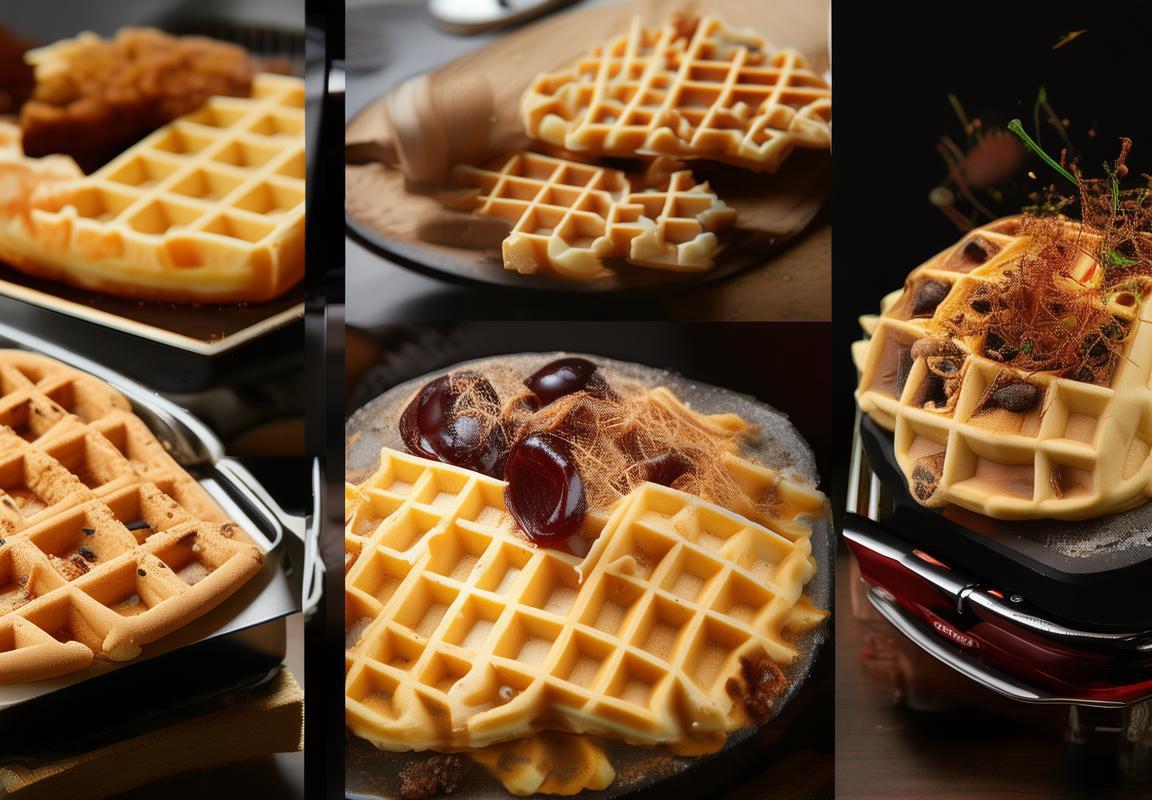
The Role of Distribution Channels
In the competitive landscape of commercial waffle makers, the role of distribution channels is pivotal in reaching the right audience and ensuring market penetration. Understanding these channels is crucial for manufacturers and retailers alike.
Retail PartnershipsRetail partnerships play a significant role in the success of commercial waffle maker brands. Large department stores, specialty kitchenware shops, and online marketplaces are key players in distributing high-quality waffle makers. These retailers often offer a diverse range of products, including premium and budget-friendly options, catering to various market segments.
Direct-to-Consumer ModelsDirect-to-consumer (DTC) models have gained traction in recent years, allowing manufacturers to sell their products directly to customers without intermediaries. This approach provides brands with greater control over pricing, marketing, and customer experience. DTC models often leverage e-commerce platforms and social media to create a direct line of communication with consumers.
Online Sales and E-CommerceThe rise of e-commerce has revolutionized the distribution landscape for commercial waffle makers. Online sales platforms like Amazon, eBay, and Alibaba have become go-to destinations for both businesses and consumers seeking commercial-grade appliances. These platforms offer a vast reach and the convenience of shopping from anywhere, making them an essential channel for manufacturers looking to expand their market presence.
Wholesale and Distribution NetworksWholesale distribution networks are critical for reaching businesses, such as hotels, restaurants, and cafes, that require multiple units of commercial waffle makers. These networks connect manufacturers with wholesalers who then distribute the products to various retailers and businesses. Efficient logistics and a reliable supply chain are crucial for maintaining inventory levels and meeting demand.
Specialized Trade Shows and ExposTrade shows and expos serve as a hub for industry professionals to showcase their products and network with potential buyers. These events provide an opportunity for commercial waffle maker brands to present their latest innovations and establish relationships with key players in the hospitality and foodservice sectors. Participating in such events can lead to direct sales and long-term partnerships.
Customization and Private LabelingCustomization and private labeling have become popular strategies for manufacturers looking to differentiate their products in the market. By offering personalized branding options, manufacturers can cater to specific customer needs and preferences. This approach is particularly effective for businesses seeking to establish their brand identity or for retailers looking to offer exclusive products to their customers.
Marketing and Brand AwarenessEffective distribution channels are not just about logistics; they also play a vital role in marketing and brand awareness. Social media campaigns, influencer partnerships, and targeted advertising can amplify a brand’s presence across various distribution channels. By leveraging these channels, commercial waffle maker brands can reach a wider audience and build a strong brand image.
Customer Service and SupportThe quality of customer service and support can significantly impact the success of a commercial waffle maker brand. Offering excellent post-sales service, including technical assistance and warranty coverage, can foster customer loyalty and encourage repeat purchases. Distribution channels that provide robust customer service infrastructure are more likely to contribute to a brand’s overall success.
Global ExpansionFor commercial waffle maker brands looking to expand internationally, understanding the nuances of global distribution channels is essential. This includes navigating different regulatory requirements, cultural preferences, and logistical challenges. Establishing partnerships with local distributors and retailers in new markets can help brands overcome these hurdles and achieve successful global expansion.
In conclusion, the role of distribution channels in the commercial waffle maker market is multifaceted. From retail partnerships and e-commerce to wholesale networks and global expansion, each channel plays a unique part in reaching customers and driving brand growth. By strategically leveraging these channels, manufacturers can ensure their products are accessible, competitive, and well-positioned for success in the market.

Conclusion
The commercial waffle maker market has seen remarkable evolution over the years, reflecting the changing tastes and demands of consumers. As we reflect on the journey, it’s clear that the industry has been shaped by a multitude of factors, from technological advancements to shifts in consumer preferences. Here, we delve into the key aspects that have contributed to the growth and development of the market, offering a glimpse into the future.
The rise of the commercial waffle maker sector has been fueled by a surge in demand from hospitality and foodservice industries. These sectors have embraced the convenience and versatility of waffle makers, using them to create a variety of delectable dishes that cater to diverse palates. From breakfast to dessert, waffles have become a staple on menus worldwide, driving the need for reliable and efficient commercial waffle makers.
Waffles have also gained popularity in Western cuisine, with a growing number of consumers seeking out this unique and indulgent treat. This has not only increased the demand for waffle makers in homes but has also opened up new opportunities for manufacturers to cater to the commercial market. The rise of health-conscious eating habits has also played a role, as waffle makers allow for the creation of nutritious and wholesome waffle variations.
Technological advancements have been a significant driver in the commercial waffle maker sector. Innovations such as non-stick surfaces, programmable settings, and energy-efficient designs have made these machines more appealing to both consumers and businesses. These features not only enhance the user experience but also contribute to the sustainability and longevity of the products.
However, the market is not without its challenges. Competition is fierce, with numerous brands vying for market share. To stand out, manufacturers must focus on differentiation, whether through unique design, superior functionality, or exceptional customer service. Additionally, market saturation can lead to price wars, which may negatively impact profit margins.
Consumer preferences are also a dynamic factor in the market. The rise of social media has made it easier for consumers to share their experiences and preferences, influencing the choices of both individual buyers and commercial buyers. Customization and personalization have become increasingly important, as consumers seek products that cater to their specific needs and tastes.
In terms of sustainability, the commercial waffle maker market faces the challenge of balancing environmental concerns with the need for cost-effective and efficient products. Energy-efficient designs and the use of eco-friendly materials are becoming more prevalent, reflecting the industry’s commitment to sustainability.
Looking at data-driven insights, it’s evident that the market for commercial waffle makers is poised for continued growth. Sales data indicates a steady increase in demand, with projections showing a promising future. Emerging trends, such as the integration of smart technology and the rise of healthy eating options, are expected to further drive market expansion.
Case studies of successful commercial waffle maker brands reveal several strategies that have contributed to their success. One such brand, known for its innovative designs and commitment to quality, has managed to carve out a niche in the market by offering a range of waffle makers that cater to different customer segments. Their focus on research and development has allowed them to stay ahead of the curve, continuously introducing new features and functionalities.
Another brand has excelled by building strong relationships with their distribution channels. By ensuring that their products are readily available and easily accessible to customers, they have been able to establish a loyal customer base. Their approach to customer service has also been pivotal in fostering brand loyalty.
The role of distribution channels in the commercial waffle maker market cannot be overstated. Online sales have grown significantly, offering manufacturers a new avenue for reaching customers. However, the importance of traditional retail partnerships remains strong, as physical stores provide tangible experiences that online platforms cannot replicate. Direct-to-consumer models are also gaining traction, allowing brands to have a more direct relationship with their customers.
In conclusion, the commercial waffle maker market is a dynamic and evolving sector, driven by a combination of technological advancements, changing consumer preferences, and sustainability concerns. While challenges exist, the opportunities for growth and innovation are vast. As the market continues to expand, it will be crucial for manufacturers to stay attuned to these factors, ensuring they remain competitive and relevant in the years to come.